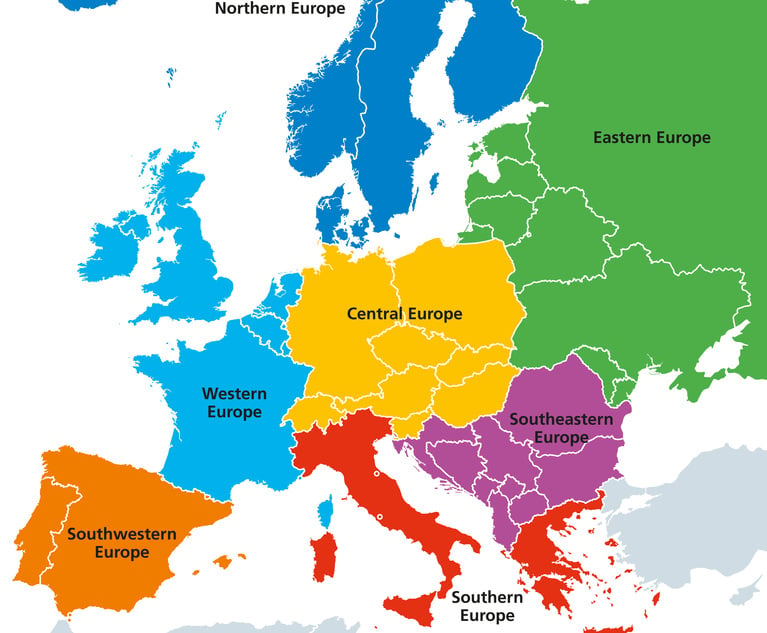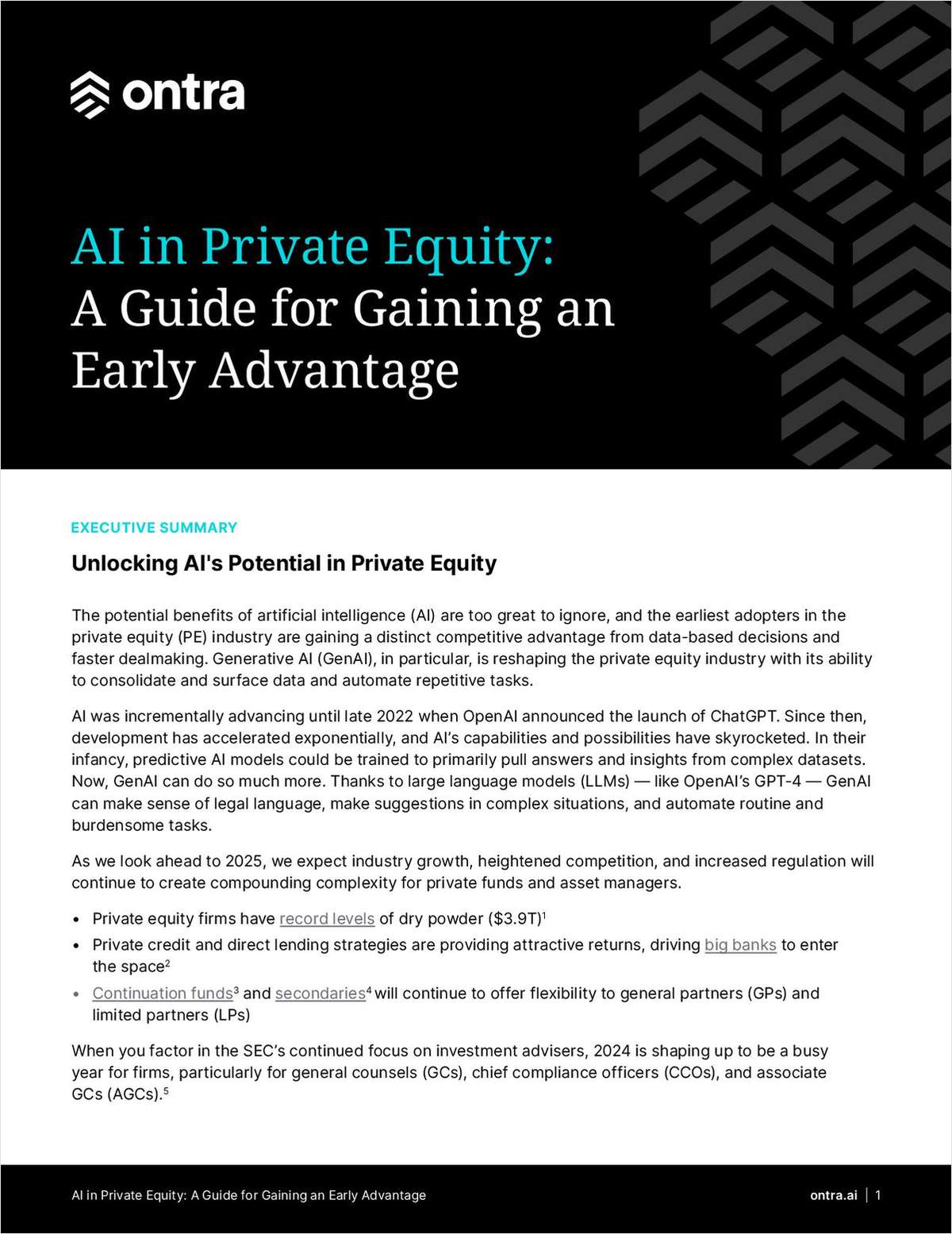Garrigues overhauls equity ranks and announces 2010-11 financials
Garrigues has completed an overhaul of its partnership structure as the firm reports a marginal increase in revenues for the 2010-11 financial year. The results, which were announced at a partner meeting on Tuesday (25 October), have seen the leading Spanish firm grow turnover for the fourth consecutive year, rising to €355.2m (£309.4m) for the year ending 31 August.
October 27, 2011 at 10:44 AM
2 minute read
Garrigues has completed an overhaul of its partnership structure as the firm reports a marginal increase in revenues for the 2010-11 financial year.
The results, which were announced at a partner meeting on Tuesday (25 October), have seen the leading Spanish firm grow turnover for the fourth consecutive year, rising to €355.2m (£309.4m) for the year ending 31 August.
The firm has also confirmed the details of a move towards one class of partner, with 152 made up to the equity, bringing the total number of full equity partners at the firm to 258.
A further 37 partners in counsel-equivalent roles will remain on a fixed salary with a portion of their income derived from the firm's profits.
Garrigues London managing partner Ignacio Corbera Dale commented: "In my personal view, people will be much more committed because their efforts will have a direct effect on their remuneration and the health of the firm."
In addition, the firm has revamped its top-level management structure, with co-managing partner Ricardo Gomez-Barreda stepping into the new role of senior partner and Fernando Vives (pictured) becoming sole managing partner.
Gomez-Barreda will handle institutional relations, oversee the implementation of decisions taken at partnership meetings, deal with conflicts of interest and advise the managing partner where necessary.
Corbera Dale added: "These changes are very positive; as a firm you have to adapt and grow to continue to do well."
The firm has announced its annual partner promotions round, with 23 lawyers made up to equity alongside two non-equity promotions. The firm's Madrid office has seen the bulk of the promotions with seven, followed by four in La Coruna (including two non-equity), Barcelona (three), Lisbon (two) and Seville (two).
The firm's offices in Alicante, Bilbao, Malaga, Murcia, Palma de Mallorca, San Sebastian, Valencia and Valladolid office have all gained one equity partner each.
Meanwhile, the voluntary retirement age at the firm has also been raised from 56 to 60, subject to a two-year transition period.
This content has been archived. It is available through our partners, LexisNexis® and Bloomberg Law.
To view this content, please continue to their sites.
Not a Lexis Subscriber?
Subscribe Now
Not a Bloomberg Law Subscriber?
Subscribe Now
NOT FOR REPRINT
© 2024 ALM Global, LLC, All Rights Reserved. Request academic re-use from www.copyright.com. All other uses, submit a request to [email protected]. For more information visit Asset & Logo Licensing.
You Might Like
View All
HSF Hires Trio for Luxembourg Launch, Builds Private Capital Practice

To Thrive in Central and Eastern Europe, Law Firms Need to 'Know the Rules of the Game'
7 minute read
What About the Old Partners Who Have No Interest in AI?

Netflix Offices Raided by Authorities in Paris and Amsterdam
Trending Stories
- 1Cars Reach Record Fuel Economy but Largely Fail to Meet Biden's EPA Standard, Agency Says
- 2How Cybercriminals Exploit Law Firms’ Holiday Vulnerabilities
- 3DOJ Asks 5th Circuit to Publish Opinion Upholding Gun Ban for Felon
- 4GEO Group Sued Over 2 Wrongful Deaths
- 5Revenue Up at Homegrown Texas Firms Through Q3, Though Demand Slipped Slightly
Who Got The Work
Michael G. Bongiorno, Andrew Scott Dulberg and Elizabeth E. Driscoll from Wilmer Cutler Pickering Hale and Dorr have stepped in to represent Symbotic Inc., an A.I.-enabled technology platform that focuses on increasing supply chain efficiency, and other defendants in a pending shareholder derivative lawsuit. The case, filed Oct. 2 in Massachusetts District Court by the Brown Law Firm on behalf of Stephen Austen, accuses certain officers and directors of misleading investors in regard to Symbotic's potential for margin growth by failing to disclose that the company was not equipped to timely deploy its systems or manage expenses through project delays. The case, assigned to U.S. District Judge Nathaniel M. Gorton, is 1:24-cv-12522, Austen v. Cohen et al.
Who Got The Work
Edmund Polubinski and Marie Killmond of Davis Polk & Wardwell have entered appearances for data platform software development company MongoDB and other defendants in a pending shareholder derivative lawsuit. The action, filed Oct. 7 in New York Southern District Court by the Brown Law Firm, accuses the company's directors and/or officers of falsely expressing confidence in the company’s restructuring of its sales incentive plan and downplaying the severity of decreases in its upfront commitments. The case is 1:24-cv-07594, Roy v. Ittycheria et al.
Who Got The Work
Amy O. Bruchs and Kurt F. Ellison of Michael Best & Friedrich have entered appearances for Epic Systems Corp. in a pending employment discrimination lawsuit. The suit was filed Sept. 7 in Wisconsin Western District Court by Levine Eisberner LLC and Siri & Glimstad on behalf of a project manager who claims that he was wrongfully terminated after applying for a religious exemption to the defendant's COVID-19 vaccine mandate. The case, assigned to U.S. Magistrate Judge Anita Marie Boor, is 3:24-cv-00630, Secker, Nathan v. Epic Systems Corporation.
Who Got The Work
David X. Sullivan, Thomas J. Finn and Gregory A. Hall from McCarter & English have entered appearances for Sunrun Installation Services in a pending civil rights lawsuit. The complaint was filed Sept. 4 in Connecticut District Court by attorney Robert M. Berke on behalf of former employee George Edward Steins, who was arrested and charged with employing an unregistered home improvement salesperson. The complaint alleges that had Sunrun informed the Connecticut Department of Consumer Protection that the plaintiff's employment had ended in 2017 and that he no longer held Sunrun's home improvement contractor license, he would not have been hit with charges, which were dismissed in May 2024. The case, assigned to U.S. District Judge Jeffrey A. Meyer, is 3:24-cv-01423, Steins v. Sunrun, Inc. et al.
Who Got The Work
Greenberg Traurig shareholder Joshua L. Raskin has entered an appearance for boohoo.com UK Ltd. in a pending patent infringement lawsuit. The suit, filed Sept. 3 in Texas Eastern District Court by Rozier Hardt McDonough on behalf of Alto Dynamics, asserts five patents related to an online shopping platform. The case, assigned to U.S. District Judge Rodney Gilstrap, is 2:24-cv-00719, Alto Dynamics, LLC v. boohoo.com UK Limited.
Featured Firms
Law Offices of Gary Martin Hays & Associates, P.C.
(470) 294-1674
Law Offices of Mark E. Salomone
(857) 444-6468
Smith & Hassler
(713) 739-1250









